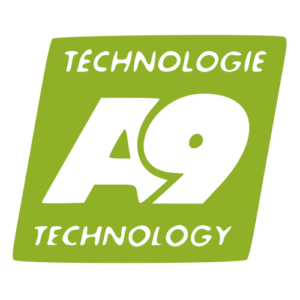
THE ANSWER IS: NO. As you have noticed in the preamble, A9 TECHNOLOGY, by a specific flocculation phenomenon, is world patented and can’t be in any way compared with all additives in the market that, for the record, we are pleased to remind you here after as well as on a physical plan (A9 TECHNOLOGY is miscible, additives are all soluble) that about performances (one and only technology which has been tested by official European laboratories).
In the past we must admit that the use of additives was justified because most of lubricants didn’t contain any, which it’s not the case anymore. As a matter of fact, all lubricants, whatever their trademarks contain normalized process in which 5 to 15% soluble additives have been already included. Nevertheless, consumers purchasing habits still remain the same owing to constant publicity campaigns from additivators. Basically, additives available in the market are divided into 3 main groups:
This first group is made of viscosity polymers which thicken the oils. The oil film being thicker, it compensates the lack of tightness of a worn segmentation. So, lubricant consumption is reduced because it doesn’t come back up to combustion chamber. Oil pressure is rising again which slows the lubricant down inside the lubricating system resulting in a less efficient lubrication. Finally, cold start won’t be easier because the oil film is longer to come into place. As 70% of engine wear occurs at cold start, this value can only be increased by thickening additives. Reminder of some products marketed under this group: BARDHAL, REDEX, STP, WYNN’S.
This second group is essentially made of particles of copper, silver and antimony (zinc and pewter). Unfortunately, these particles can’t really stick on greasy surfaces under intensive friction. If by any chance these particles could settle deep in scratches, they wouldn’t compensate engine global wear during its use. Moreover, these « micro particles » are often above 4 microns, which explains filter obstruction. (The filters being calibrated
between 4 to 6 microns) If remetalising additives have an apparent efficiency, this is not due to any remetallizing principle but only to the fact that they oxidize oil bath when it rises in temperature. This oxidation thickens the oil bath automatically which brings us back to the first group of thickening additives. Another major problem caused by remetallizing additives is that some of the particles form an electrolytic couple with engine iron (copper-alloys).As regards lead it is exactly what we wish to avoid regarding ecology As a matter of fact, this kind of product can be efficient with a very old engine which « smokes » by restricting oil rising into the combustion chamber; then emissions are reduced and it becomes easier to resale the vehicle. Hard luck, the new owner won’t have any restored mechanics and once the « mask is gone », emissions will appear again very quickly. At last, from a marketing point of view, the use of these complex particles allows the manufacturer to raise its price and it’s very expensive for users as regards the fact that they have to do this additivation every two oil changes or even at each oil change. Reminder of some products marketed under this group: METAL 5, RESTORE, RSL, and
START PILOTE.
Anti-wear additives are made of four types that we summarize here after:
Used by some oil companies for more than 60 years, their old fashioned technology is no more current nowadays. We must notice that graphite is a heavy density element which creates by centrifugation some deposits obstructing the lubrication circuit. To compensate this disadvantage, graphite is introduced into the oil bath in colloidal suspension and in a very tiny proportion, just for the sake of it. Reminder of the last trademark using graphite symbolically: ANTAR MOLYGRAPHITE
This kind of additive has greatly contributed to improve lubricant behavior by placing mineral particles into moving parts. It especially allows generating variable viscosity rating according to lubricants’ temperatures of use. This basic additive has moreover allowed oil companies to market modern multi grade lubricants. In other word, bi- sulphide of molybdenum is already included into modern lubricant process. For this reason, to add such additive was essential thirty years ago and is from now on totally useless. Reminder of some products marketed under this group: LIQUY MOLY, MOLYKOTE, and
DURALUBE.
To be included into oil bath, ceramics need high quantity of solvent which deteriorate oils’ doping chain. Then, lubricating ability of oil bath is reduced and engine’ gaskets and polypropylene and neoprene seals are damaged. To be convinced, we’ve done the
following experience: We have poured an additive containing ceramics into a polycarbonate container.48 hours later, the container was totally dissolved on our laboratory draining board. At the beginning, ceramics have been made to lubricate weapons which contain neither gaskets or seals nor oil bath. So, exit speed of projectile was improved and in the same time weapon couldn’t be locked whilst Protecting gun bore. The danger is to have merged two application fields diametrically opposed. Reminder trademark marketed under this group: 96, CERAMIX, TECFLOW.
P.T.F.E, which is flu carbonated resins, have exceptional antifriction properties which may be used as raw materials (gears holding up light efforts) or in deposit forms (cooking dishes). Unhappily, to incorporate any P.T.F.E into lubricant, the traditional method consists in hydrolyzing them with solvents which automatically degrade any lubricant. That’s why all additives manufacturers recommend to change oil bath quite quickly after treatment. Reminder of trademarks marketed under this group: MICROLON, PROTEK, PRO MOTION, PETROLON, SLICK 50, NULON, and BITRON, PROLONG….